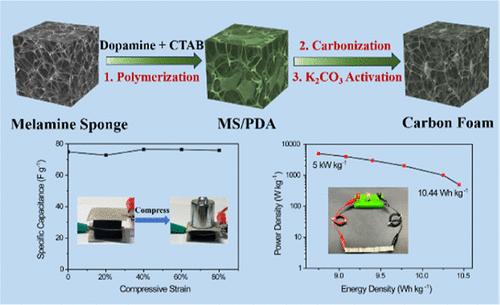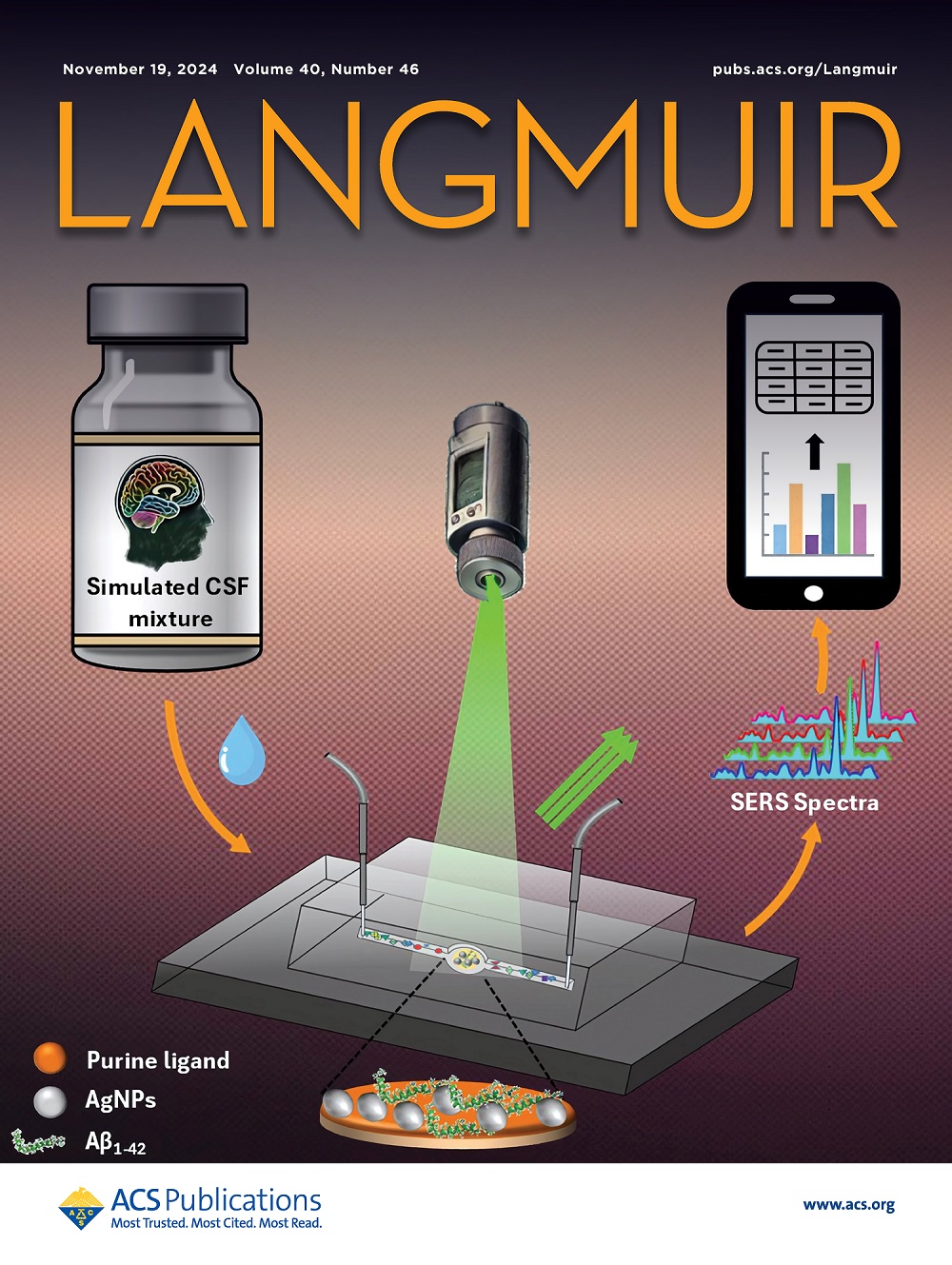Polydopamine/Melamine Sponge-Derived Compressible Carbon Foam for High-Performance Supercapacitors
IF 3.7
2区 化学
Q2 CHEMISTRY, MULTIDISCIPLINARY
引用次数: 0
Abstract
Electrode materials with a deformation capability are vital to the development of flexible supercapacitors. However, the preparation of porous carbons with a deformability remains challenging. Herein, a compressible carbon foam has been successfully prepared using a polydopamine/melamine sponge (PDA/MS) as the precursor material. The porous structure of the carbon foam was controlled by using cetyltrimethylammonium bromide and K2CO3 as template and activating agent, respectively. The resultant PDA/MS-derived carbon foam (KDMC) has a three-dimensional network architecture and exhibits excellent compressibility. The specific surface area reaches ∼2890.0 m2 g–1. Furthermore, KDMC demonstrates outstanding capacitive performance, including excellent specific capacitance (365.6 F g–1, 0.5 A g–1), good rate capability (86.6% capacitance retention from 0.5 to 10 A g–1), and outstanding cycling stability (only 1.9% capacitance loss after 10,000 cycles). To further demonstrate the practical application potential of KDMC, a symmetric supercapacitor (KDMC//KDMC) was assembled with a PVA/KOH gel electrolyte. The symmetric device achieved an energy density of 10.44 W h kg–1. This work presents a robust method to prepare compressible electrode materials for high-performance supercapacitors.

用于高性能超级电容器的聚多巴胺/三聚氰胺海绵衍生可压缩碳泡沫
具有形变能力的电极材料对柔性超级电容器的发展至关重要。然而,具有可变形性的多孔碳的制备仍然具有挑战性。本文以聚多巴胺/三聚氰胺海绵(PDA/MS)为前驱体材料,成功制备了可压缩碳泡沫材料。以十六烷基三甲基溴化铵为模板剂,以K2CO3为活化剂,控制泡沫炭的多孔结构。所得的PDA/ ms衍生泡沫碳(KDMC)具有三维网络结构和优异的可压缩性。比表面积达到~ 2890.0 m2 g-1。此外,KDMC具有出色的电容性能,包括优异的比电容(365.6 F - 1, 0.5 A g-1),良好的倍率能力(从0.5到10 A g-1的电容保持率为86.6%),以及出色的循环稳定性(10,000次循环后电容损失仅为1.9%)。为了进一步证明KDMC的实际应用潜力,我们用PVA/KOH凝胶电解质组装了一个对称超级电容器(KDMC//KDMC)。该对称器件的能量密度达到10.44 W h kg-1。本文提出了一种制备高性能超级电容器可压缩电极材料的可靠方法。
本文章由计算机程序翻译,如有差异,请以英文原文为准。
求助全文
约1分钟内获得全文
求助全文
来源期刊

Langmuir
化学-材料科学:综合
CiteScore
6.50
自引率
10.30%
发文量
1464
审稿时长
2.1 months
期刊介绍:
Langmuir is an interdisciplinary journal publishing articles in the following subject categories:
Colloids: surfactants and self-assembly, dispersions, emulsions, foams
Interfaces: adsorption, reactions, films, forces
Biological Interfaces: biocolloids, biomolecular and biomimetic materials
Materials: nano- and mesostructured materials, polymers, gels, liquid crystals
Electrochemistry: interfacial charge transfer, charge transport, electrocatalysis, electrokinetic phenomena, bioelectrochemistry
Devices and Applications: sensors, fluidics, patterning, catalysis, photonic crystals
However, when high-impact, original work is submitted that does not fit within the above categories, decisions to accept or decline such papers will be based on one criteria: What Would Irving Do?
Langmuir ranks #2 in citations out of 136 journals in the category of Physical Chemistry with 113,157 total citations. The journal received an Impact Factor of 4.384*.
This journal is also indexed in the categories of Materials Science (ranked #1) and Multidisciplinary Chemistry (ranked #5).
 求助内容:
求助内容: 应助结果提醒方式:
应助结果提醒方式:


